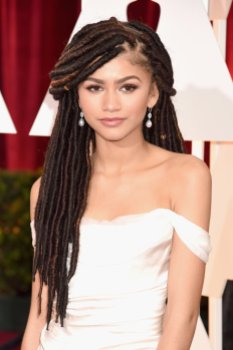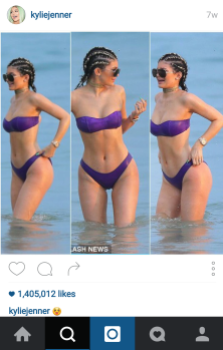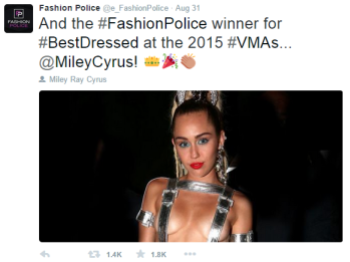The cultural double standard of the ‘do: is it really just hair?

From left, Miley Cyrus, Zendaya Coleman and Kylie Jenner have all ignited a viral cultural appropriation discussion with their hairstyle choices. (Sources: Twitter, Creative Commons, Instagram)
By: Yayonah Bangura | Posted On Sept. 29, 2015
Metallic suspenders, a nude thong, a barely-there bedazzled cover-up and knee-high plat-form boots were all it took for Miley Cyrus to shake the Twitter-sphere at the beginning of this year’s MTV Video Music Awards.
In typical controversial fashion, Cyrus’ look was topped off with a high ponytail of long, blonde dreadlocks.
E! Network’s Fashion Police took to Twitter the following day to award Cyrus as “VMA’s best dressed,” raising questions within some who remembered the Fashion Police’s last encounter with a celebrity wearing dreadlocks on a red carpet as a negative one.
In late February, actress Zendaya Coleman wore extension dreadlocks, also known as “faux locs” to the Oscar awards. During an episode of Fashion Police, host Guiliana Rancic commented that Coleman’s dreads made her appear as if she “smelled like patchouli oil, or weed.”
Rancic publicly apologized for her comments and all seemed to have been forgiven as the show renewed its season after its cancellation. However, many are now giving the entire cast side-eyes for praising Cyrus’ dreadlocks, raising the issue of cultural appropriation fueled by the media.

Actress Zendaya Coleman at the Oscar Awards (Credit: Hhenry oliver1999 creative commons Wikimedia)
If you’re an active social media user, you may have come across the words “cultural appropriation” lately, especially on Twitter.
The term can be complex, but recently it’s been used to describe a situation where a Caucasian person is deemed “fashionable” or “trendy” for wearing or “appropriating” a style of another culture that is usually seen as inferior for that very same style.
Case in point: several weeks ago Kylie Jenner posted an image on Instagram wearing cornrows in a promotion for her line of hair wigs. Actress Amandla Stenberg commented, calling Jenner out for appropriating Black culture and features without using her position of power to actually help African-Americans combat racial issues.

Jenner’s Instagram post which sparked a cultural appropriation discussion.
Media outlets ran with the comment, pitting the girls against each other and calling Stenberg a bully for “attacking” Jenner. In reality, Stenberg was responding to a comment left by a Jenner fan who said “#whitegirlsdoitbetter,” implying that White women like Jenner wear braids and other African-American hairstyles better than African-American women themselves.
Those who disagree with the existence of appropriation may call it a simple “cultural exchange,” which can be described as a mutual sharing of knowledge, art, customs, values and behaviors between different cultures. They may say that cultural exchange is inevitable, and that social media just gives people a platform to be super-sensitive and politically correct about things as “trivial” as hair.
But if it is “just hair,” then why did the U.S. military ban natural hairstyles like braids, twists, afros and dreadlocks and include words “matted and unkempt” in their grooming guidelines in 2014, when the styles are worn to maintain the health of Black hair?
Why did the Dean of Hampton University’s business school ban dreadlocks and cornrows in 2012, believing that the hairstyles would prevent students from getting corporate jobs? Why was 12-year-old Vanessa VanDyke given the ultimatum to either cut or straighten her natural hair or be expelled from school because it was a “distraction” in 2013?
Why are minorities chastised for the very same styles that the privileged not only sport, but capitalize on?
Stenberg made an informational YouTube video entitled, “Don’t Cash Crop my Cornrows,” that explains the difference between exchange and appropriation.
“The line between cultural appropriation and cultural exchange is always going to be blurred but here’s the thing,” Stenberg said in the YouTube video. “Appropriation occurs when a style leads to racist generalizations or stereotypes where it originated, but is deemed as high-fashion, cool, or funny when the privileged take it for themselves.”
Professor Ronald Tyson, who teaches Afro-American Cultural Anthropology at Kean, spoke on a possible resolve for the issue from a monetary angle.
“Protests always work. Capitalists like making money and if you threaten their money, they will shift gears because they want to maximize their profit. Things like boycotts and opting out of supporting exploiters work,” said Tyson.
“There are going to be a significant number of well-meaning people who, if they don’t see cultural appropriation’s harms directly, can be shown it and will act accordingly to their conscience, which wants to do the right thing,” hecontinued. “We can gain allies and exert economic and political pressure. By continuing to point it out, we can influence change.”
African-Americans are not the only ones at the forefront of the appropriation battle. Desi-Indian girls are also fighting the issue with their Twitter hashtag #reclaimthebindi, Native-Americans are speaking out against festival goers who wear warrior headdresses, and Asian-Americans are addressing celebrity pop culture’s fascination with Geisha costumes.
All over the world, people are taking a stand against the exploitation of sacred culture for profit, and the voices of the oppressed are being heard. It may take some time to see real change, but right now it’s imperative that we take the first steps to get and keep the conversation going.
Yayonah Bangura may be reached at banguray@kean.edu. Follow The Tower on Twitter @KeanTower. Find The Tower on Facebook.


You must be logged in to post a comment.